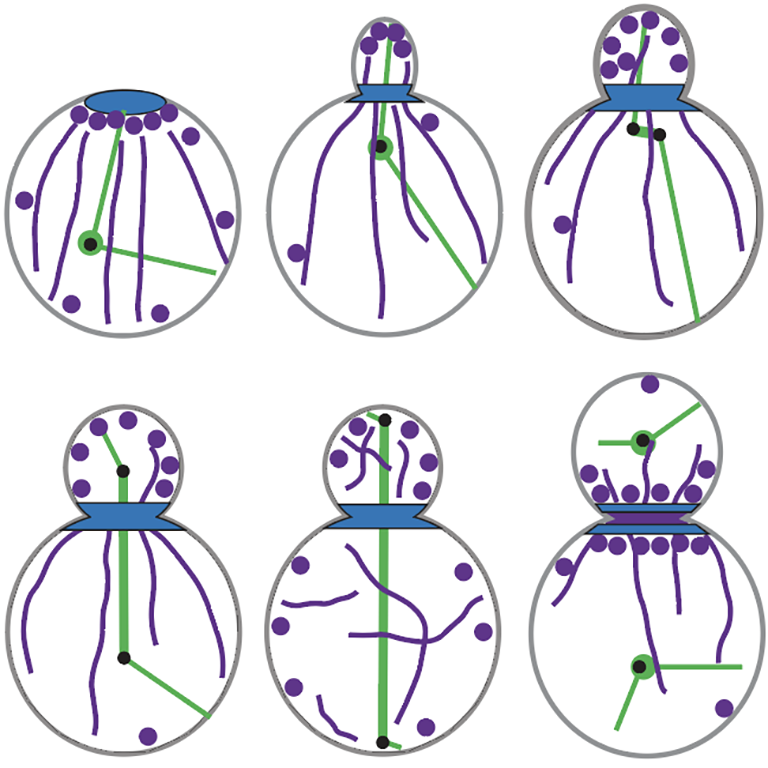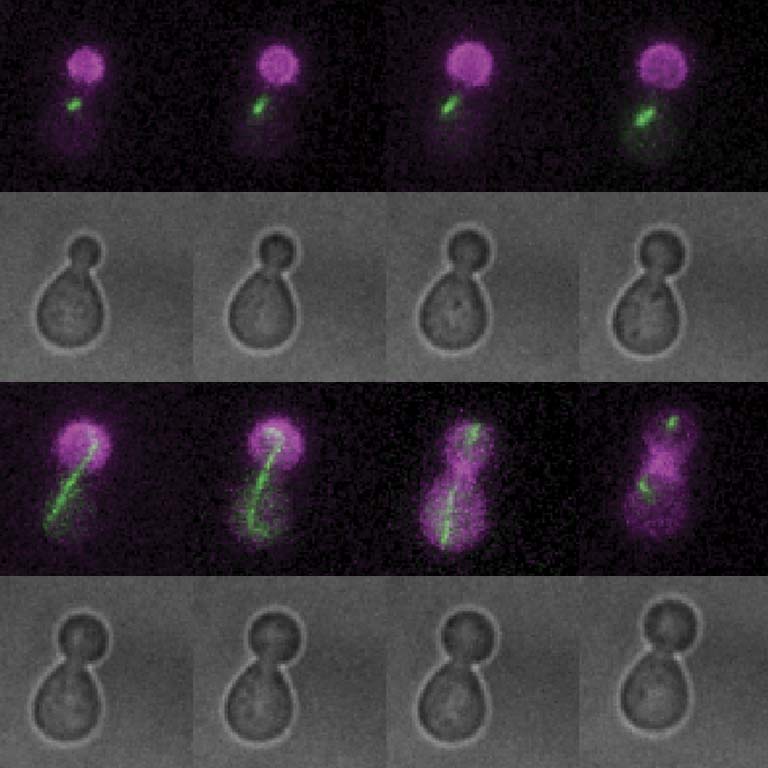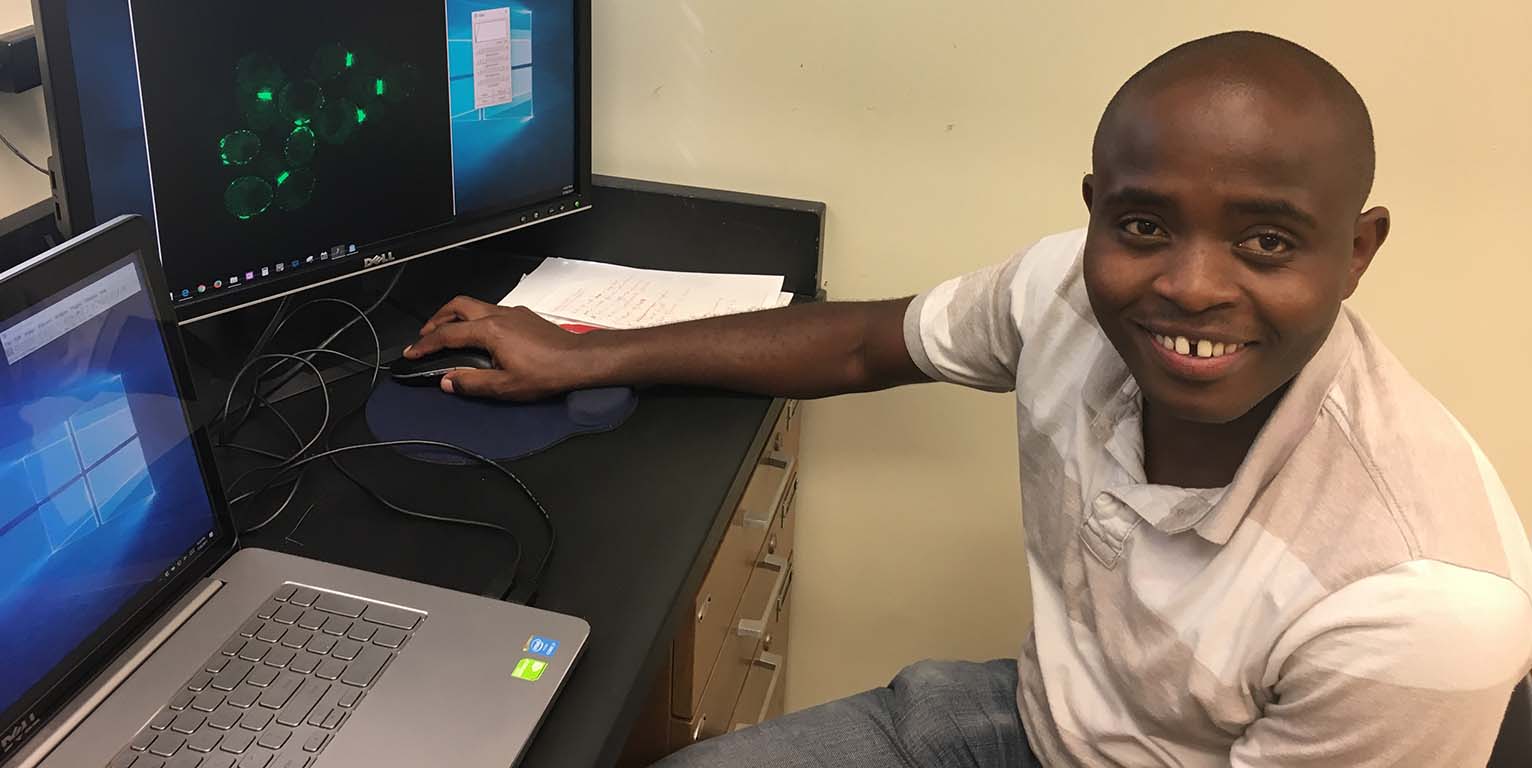Researchers in Soni Lacefield’s lab analyze how cell polarity is regulated during the cell division cycle. Lacefield is an associate professor in the Indiana University College of Arts and Sciences’ Department of Biology.
Polarity refers to cells having distinct domains that allow differences in the growth of the plasma membrane. For example, in the single-celled organism budding yeast, polarized growth forms the bud, which becomes a daughter cell after cell division. Polarized bud growth is linked to the cell cycle, initiating in G1, and enlarging the bud in S and early M phase. Once the chromosomes segregate in mitosis, the bud stops growing and the two cells divide. The initiation of bud formation requires the localization and activity of a GTPase called Cdc42. How Cdc42 is activated for bud growth has been heavily studied, but how it is inactivated during mitosis was not previously known.
In a recent paper published in the Journal of Cell Biology, Lacefield and lab members Gabriel Muhire Gihana (graduate student and lead author on the paper) and Arthur Cross-Najafi (undergraduate student then research associate) show that a phosphatase called Cdc14 stops bud growth by promoting the depolarization of Cdc42. Cdc14 is released from the nucleolus after chromosome segregation and interacts with the substrate Bem3, a GTPase activating protein for Cdc42. Bem3 inactivates Cdc42, ending polarized cell growth.




 The College of Arts
The College of Arts